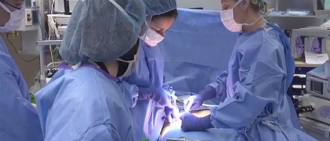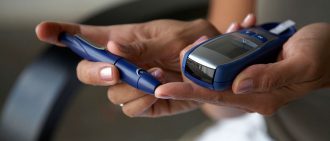Meet Danielle, who benefited from bariatric surgery when she learned that her diabetes could cause life-threatening complications. Here, you’ll learn about:
- Long-term effects of bariatric surgery, including weight maintenance and other health benefits
- “Tummy-tuck” procedures post-surgery
- Post-surgery meal plans
- Specifics on how bariatric surgery can improve or even reverse diabetes
Learn more about bariatric surgery at UPMC.
-
Benefits and Risks of Bariatric Surgery
Studies have shown that most patients who have undergone bariatric surgery have seen a significant improvement in weight loss, keeping the weight off, as well as improvement in diabetes, lipids, and blood pressure, even at the three year mark.Learn More
-
Ask the Expert: Tummy Tucks
Tummy tucks, also known as abdominoplasties, are common among bariatric surgery patients to remove excess skin and fat tissue. Our experts share what you can expect from the procedure.Learn More
-
Infographic: Bariatric Recovery Meal Plans
Recovery from bariatric surgery happens one notch at a time, which can be a difficult obstacle if you don’t have a plan. From clear liquid to pureed diet, all the way to stabilization, our infographic outlines a diet plan for each of the five steps on your bariatric recovery. Check out our infographic for a guide on each of the steps on the bariatric journey.Learn More
-
Can Bariatric Surgery Help Type 2 Diabetes?
It’s clear that bariatric surgery can be a useful tool for people who need to lose 100 pounds or more. But can bariatric surgery also control or even help reverse type 2 diabetes? According to studies conducted at the University of Pittsburgh Medical Center, it’s quite possible. Read more to discover how bariatric surgery can improve quality of life for those with diabetes.Learn More




